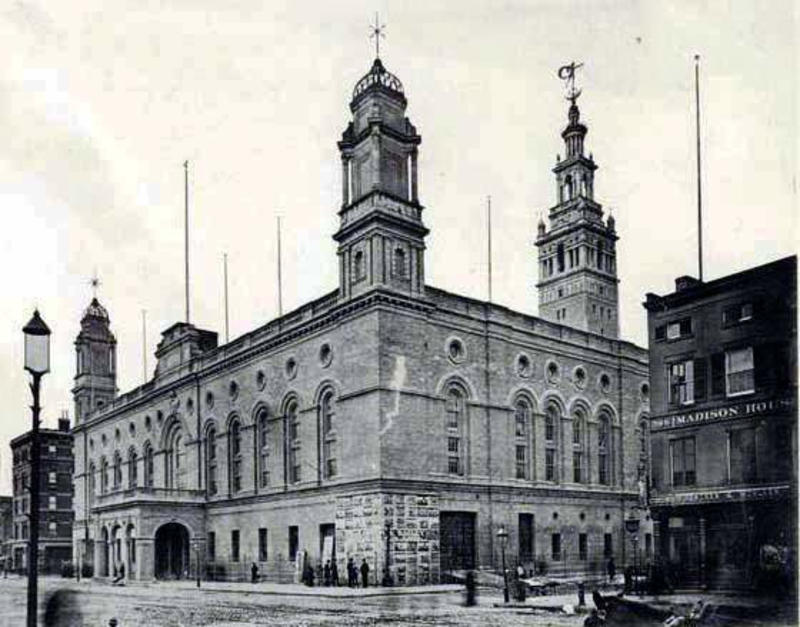18. Madison Square Garden
 Image via Wikimedia Commons
Image via Wikimedia Commons
Stanford White designed the second of four Madison Square Gardens that have existed in various locations around New York City. The first arena to bear the name was P.T. Barnum’s “Great Roman Hippodrome” near Madison Square Park. The building became Madison Square Garden when it was purchased by William Kissam Vanderbilt in 1879. That building was demolished in 1889 and replaced the next year by White’s Moorish styled theater. With funding from big name New Yorkers like Andrew Carnegie, the Astors, and J.P. Morgan, White went all out.
The 33-story minaret White designed for the building, modeled after the campanille of the Giralda in Seville, Spain, made the Garden the second-tallest skyscraper in the city. White even had his own personal apartment inside the tower. The tower was topped by a 13-foot statue of Roman goddess Diana by Augustus Saint-Gaudens. The statue was nude, which caused outrage from the New York Society for the Suppression of Vice and forced the sculptor to “cover her modest” with drapery. The drapery blew off in the wind only a few weeks after it was placed on the statue.
White’s Madison Square Garden held a cafe, New York City’s largest restaurant, a rooftop theater, and sports area which all told held 8,000 people. It was at lavish rooftop theater that White’s lavish life came to end. In 1907 White was murdered by Harry Thaw, the jealous millionaire husband of Evelyn Nesbitt, a former lover of Stanford White. White’s Garden was torn down in 1925 and today it is the site of the New York Life Insurance building.





